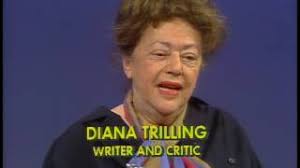26. Gloria Naylor
“What Dick Simon wants is for Gloria Naylor to just go
burn in hell.” -Gloria Naylor
Over
the last 17 years of her life, Gloria Naylor published just one novel, landing
it at a small press, which brought it out with a rather unappetizing cover, a
low-rent mishmash of yellows, browns, and oranges with some light collage-work
mixed in, and in a text with more than its fair share of typos. It was a long
way from her triumphant 1982 debut, The Women of Brewster Place, which
not only won a National Book Award but was adapted into both a miniseries and a
musical, or even the rest of her body of work which continued to earn critical
plaudits and reap non-negligible receipts. But 1996, as her final novel,
published in 2005, is called, is a different sort of book. What would now be
labeled autofiction—it features a character based closely on the author, it
portrays a loosely fictionalized account of events that happened to her, it’s
ultimately about its own writing—1996 is a chronicle either of a vast
governmental conspiracy targeting the innocent Naylor or a tale of intense
paranoia. Either way, it explains the author’s lack of late-career productivity
in a way that’s more than a little tragic.
It’s not
unusual to feel that forces beyond our control are stacked up against us.
That’s largely because they are. In 1996 when the events of Naylor’s book took
place, we had a much dimmer understanding of the secret operations of
governmental organizations than we do now. The organization that so bedevils
Naylor in 1996, the NSA, for one, has been revealed as an all-seeing
apparatus that illegally spies on even the most insignificant of citizens. And
that’s what makes reading Naylor’s book so chilling. Although she trades in
what are largely fringe theories—“Gloria Naylor” is the victim of a program of
electronic harassment, in which agents both read her thoughts and feed thoughts
into her brain—the idea of a powerful agency waging psychic war on a seemingly
insignificant person no longer seems so far-fetched. Whether or not the author
was the target of a secret governmental operation or not, we know that other
innocent people are and have been.
The line
between fiction and nonfiction is thin in 1996 and it’s clear that
Naylor believed herself to be the target of the same mind-control campaign as
her fictionalized stand-in. “Many of these things did happen to the real Gloria
Naylor,” she told a skeptical NPR interviewer in 2006, and the book’s
appendices include a survey of governmental mind-control experiments as well as
the details of a lawsuit a former NSA official brought against the organization
because of its alleged program of electronic harassment, attempts by Naylor to
bolster her story’s credibility by calling on outside sources. The novel’s
structure seems to reinforce this legitimizing principle as well. In
alternating chapters, Naylor delivers a first-person account of her experiences
which is then followed by a third-person narrative of NSA officials and their
underlings plotting against her. The effect is of seeing paranoia confirmed:
Naylor suspects a plot and then, immediately after, she’s fully affirmed in her
suspicions.
1996
is a book of rapid, steady escalation and that’s what makes it so startling. The
action begins with Naylor engaging in a petty squabble with a slightly unhinged
neighbor and then, because that neighbor’s brother, the Dick Simon of the
citation above, is an NSA official, Naylor quickly becomes subject to that
organization’s power and resources. Because Simon and his sister are Jewish,
they seize on a comment Naylor made in support of the Louis Farrakhan-led
Million Man March to paint her as an anti-Semite, and enlist volunteers under
the aegis of the Anti-Defamation League to drive up and down her block,
harassing her with their constant presence and noise pollution. (This whole
Jewish angle both usefully critiques the common strategy of making false claims
of anti-Semitism to dismiss undesirable people and viewpoints, and plays,
perhaps, as just a smidge anti-Semitic itself.) From there, it’s a small step
to more invasive campaigns, ultimately invading Naylor’s very head space as
hateful thoughts are transmitted directly into her brain.
And why do these operatives take
all these measures against a woman who clearly poses no threat to anyone? If
that’s a question the book doesn’t answer, it’s because there is ultimately no
answer. Once the machinery has been set in place, it takes on a life of its
own. Some of the operatives enjoy their job, some, like Dick Simon, find it a
burden, but individual actors finally don’t matter so much. Technology ultimately
creates its own necessity. If the means exist, the ends are irrelevant, are, at
best, a pretense. Once created, a thing must be used, and used it will be,
operating according to its own insidious logic, even if that logic means
destroying the life of a mild-mannered writer of literary fiction who lives a
peaceful, harmless, and largely solitary existence.



Comments
Post a Comment